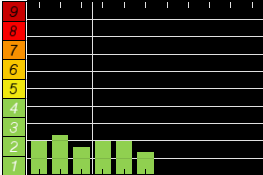What is an RF Ground?
RF ground is a vague term: People claim they know what it is when they see it, but can't define it. Many radio amateurs are easily misled by untruths about RF grounds. What follows is by no means the last word on RF grounding, but should help fill a void in the radio amateur's literature.
In my opinion, an RF ground is something that presents a low impedance at all frequencies of interest on the desired ground surface. All frequencies of interest usually means just the transmission frequency and all spurii. Spurii usually include harmonics, but may include mixing products. The ground surface is the tricky part. What do you want to be at ground potential? Surely you don't expect your microphone to be at ground potential on all frequencies, do you? Think about it: A coiled microphone cord is a bigger radiator than many "rubber duck" antennas! With proper matching, you could probably make a better antenna out of the mic cord shield! In this case, low impedance means "small reactance and resistance." Some radio amateurs just look at the resistive part of the impedance and forget about the reactance, which often is huge!
The size and shape of conductors are very important in evaluating a ground surface. Take, for example, a tall, thin aluminum structure that is grounded at one end. No matter how well you ground that one end, the structure still radiates and receives RF energy--that's why it's called an antenna. The shape that offers the lowest impedance is a sphere. (The Earth is a pretty good approximation of a sphere.) Size is also important--you wouldn't expect a metal-covered tennis ball to present a low impedance on 160 meters.
Read More
Lighting Protection Articles:
Lightning Protection for the Amateur Radio Station -- Part 1 (QST PDF)
Lightning Protection for the Amateur Radio Station -- Part 2 (QST PDF)
Lightning Protection for the Amateur Radio Station -- Part 3 (QST PDF)
Choices and consequences of station lightning protection (article) if you choose to not properly ground your station.
Amateur Radio Emergency Service - W4ACA
Proudly using the Oak Ridge ARC (W4SKH) Repeaters & W4ACA APRS Digipeater
Wednesday, October 31, 2007
Assorted Grounding Hints, Kinks and Technical Correspondence
Posted by
Anderson County ARES
at
10/31/2007 07:57:00 PM
![]()
Labels: General News, News Articles, Projects
Subscribe to:
Post Comments (Atom)
Anderson County ARES Information
The Anderson County ARES net meets every Tuesday Night at 7PM local time.
We use the the W4SKH Oak Ridge ARC repeaters.
The main repeater is: 146.880 PL Tone 88.5 (Currently Online)
The current back up is: 146.970 (Currently Online)
The ARES Nation Simplex Frequency is 147.420 and will used if required.
The net preamble for the Anderson County ARES net can be found here.
NET PREAMBLE
Net Control Station Manual
New FCC BAND PLAN (pdf) Updated Version with a different layout HF Band Plan Vertical (pdf) Courtesy of KB6NU's Ham Radio Blog
If you would like to join Anderson County ARES please complete the application form and submit it by email to Jeff or Moe.
Emergency Coordinator and Staff
Jeff Yawn K4IK Emergency Coordinator (865)567-2577
Jim Bogard - KY4L Assistant Emergency Coordinator
Larry Hensley - KB4ITS Asst Emergency Coordinator / Net Manager
Steve Lothridge - KI4RGN Net Manager
Moe Brewer - N4CQW Asst Emergency Coordinator / Webmaster
We use the the W4SKH Oak Ridge ARC repeaters.
The main repeater is: 146.880 PL Tone 88.5 (Currently Online)
The current back up is: 146.970 (Currently Online)
The ARES Nation Simplex Frequency is 147.420 and will used if required.
The net preamble for the Anderson County ARES net can be found here.
NET PREAMBLE
Net Control Station Manual
New FCC BAND PLAN (pdf) Updated Version with a different layout HF Band Plan Vertical (pdf) Courtesy of KB6NU's Ham Radio Blog
If you would like to join Anderson County ARES please complete the application form and submit it by email to Jeff or Moe.
Emergency Coordinator and Staff
Jeff Yawn K4IK Emergency Coordinator (865)567-2577
Jim Bogard - KY4L Assistant Emergency Coordinator
Larry Hensley - KB4ITS Asst Emergency Coordinator / Net Manager
Steve Lothridge - KI4RGN Net Manager
Moe Brewer - N4CQW Asst Emergency Coordinator / Webmaster



No comments:
Post a Comment